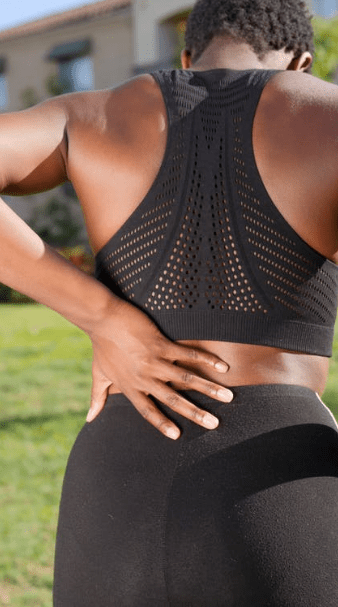When you hear about acne, the first thing you probably think of is acne on the face. But did you know that the face is not the only part of your body where acne can develop? All of your body that has oil-secreting glands or hair follicles can develop acne. These body parts include your back, chest, and shoulders.
So, how does acne develop?
Your face, back, chest, and shoulders have sebaceous glands. These are the oil-secreting glands that produce sebum, an oily substance. The accumulation of sebum, along with dead skin cells, within the pores in the skin, combined with the overgrowth of a common skin bacteria called Cutibacterium acnes, triggers an inflammatory response, resulting in what is seen on the surface as acne.
Active and outdoor activities often increase the chances of acne development as these activities result in extreme sweating and clothing or gear friction. Eventually, a follicle would get clogged and break down, causing an acne lesion.
Your entire back can have acne. Back acne, or often called “bacne”, can grow out of hand if left unattended.
Different types of acne lesions can occur on your back. You need to know these to get the proper medication or regimen to prevent it from worsening.
Whiteheads
Whiteheads, or closed comedones, occur when a plugged follicle stays closed and beneath your skin, creating a white bump.
Blackheads
On the other hand, blackheads, or open comedones, occur when a plugged follicle located on the surface of your skin opens. Contrary to the misconception that the color is due to the dirt on the spot, the black color results from the reaction between sebum and the air.
Papules acne lesions
This type of acne lesions are typically called papules, occurring as small pink bumps on your skin, but they do not contain pus. They develop when a clogged hair follicle becomes inflamed.
Pustules
The most well-known one is the pustules. These are commonly known as pimples or the white or yellow pus-filled papule covered by a reddened base. The pus is due to the buildup of white blood cells due to the inflammation in a clogged hair follicle.
Nodules
Nodules originate from bacteria that get trapped in a hair follicle, further developing under the skin’s surface, where it hardens and forms a large, sensitive nodule on the surface. The depth of the lesion causes tissue damage, resulting in an inflammatory response.
Cysts
Cysts, just like pimples, are pus-filled acne lesions. Cysts happen when bacteria get trapped in a hair follicle. However, cystic acne causes the infection to seep deeper into the skin, manifesting a sensitive lump on the surface that can cause a permanent scar.
Dermatologists say that bacne is associated with hormonal fluctuations and genetics. While these are things that you cannot control, there are ways to counter acne and prevent it from developing in the first place. You can start by changing some of your hygienic practices.
Shower After Your Workout
As you know, bacterial growth is one of the main causes of acne, and thus, it should be prevented. Heat and humidity from working out can encourage bacteria to build up. Immediately shower after a workout to avoid bacteria from lingering in your skin and possibly getting absorbed.
If you cannot show after working out, opt to wipe as much sweat from your body as you can using oil-free cleansing, then change your clothes.
Medicated body cleanser
When showering, it is recommended that you use a medicated body cleanser, particularly those with ingredients like salicylic acid that can unclog your skin pores and kill acne bacteria. You can also opt to choose organic products with similar effects.
There are also over-the-counter acne creams and gels with benzoyl peroxide, resorcinol, salicylic acid, and sulfur that can help get rid of blemishes and prevent new ones from popping up. However, be constantly wary of chemicals that can worsen your acne.
Wear Clean Clothes
Dirty clothes harbor oil, sweat, and dirt that can encourage the growth of bacteria, contributing to acne development. Wear clean and loose sweating to avoid bacteria buildup and friction between your skin and your clothes.
Eliminate Pressure on Your Back
The sweating from outdoor activities and friction on your back against your tight gears also contribute to acne. To prevent this, choose a lightweight backpack to minimize friction or avoid putting pressure on your back as much as you can.
Don’t Squeeze or Pick Back Lesions
If you think picking or popping your acne can improve its state, you are wrong. It can get worse and damage your skin. Remember that your skin also heals itself, so it is better to let it do its job or apply products to help your acne situation.
Avoid Excessive Sun Exposure
Ultraviolet (UV) rays from the sun can darken acne and trigger scars on your back and body. Of course, the best way to avoid this is always to apply sunscreen, especially when going outside. It both protects your acne from worsening and helps you prevent skin cancer.
Wash Your Sheets
Your skin is also exposed to your sheets every day to make sure that you change or wash your sheets once or twice a week to remove bacteria, dirt, and dead skin cells that can clog your pores and prolong back acne.


